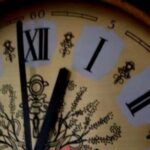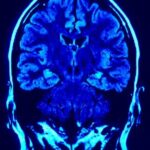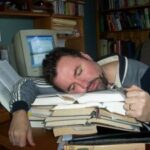For eons, man considered sleep as little more than a nightly vegetative state when one’s daily activities were stilled for a period of time. But insomnia, on the other hand, was considered an inexplicable curiosity. It plagued many, was random in appearance, and had no exact causes or cures. Nightmares were the domain of bad children, bohemian, and the mentally ill and should not be taken too seriously. In the 1930s electroencephalograms (EEGs) were introduced and for the first time human brain waves could be studied and analyzed. This was the origin of sleep science research. Studies continued until, in 1953, the phenomenon of rapid eye movement (REM) during sleep was evaluated. REM provided proof that the body is not totally at rest while sleeping. Then the study of sleep science begin to bloom.
In 1988, the United States Congress created the National Commission on Sleep Disorders and Research. Their final report, which was published in 1993. It included a number of astonishing facts, among them were;
Over 35% of the U.S. adult population does not get enough sleep each night.
40 million Americans suffer from some form of chronic sleep disorder and another 20 to 30 million of them experience frequent intermittent insomnia. The insomnia sufferers’ condition is serious enough to put them and others around them at risk of injury or illness.
The fallout as a result of this sleep deprivation directly and indirectly cost the U.S. businesses and organizations over 23.58 billion dollars each year in loss work hours, injuries, and losses. These cost exceed the combined cost of damaged caused by cigarette smokers and AIDS.
Every year on the U.S. highways, 40,000 people die and an additional 250,000 more are injured as a result of someone at the wheel of a motor vehicle falling asleep while driving. In over 200,000 traffic accidents that occur annually, the primary cause is a sleep deprivation related situation.
Four per cent of American adults are currently taking some type of prescribed sleep medication regularly. An additional 3 % reported they purchase and use some type of over the counter sleep aid.
There are 17 distinct sleep disorders individuals suffer with. 95% of them are never diagnosed, thus go untreated.
Too little sleep can make you sick. Some immune system activities decrease by as much as 30% after a few nights if an individual miss three or more hours of sleep. While sleeping, the brain does not shut down. Sleeping allows the brain time to consolidate the day’s learning into memory. That is why what seemed new and confusing one day is better understood the next.
Sleep turned out to be a highly complex activity and sleep related disorders affected a very large portion of the adult population. Ignorance about sleep and how to find help for solving sleep problems is universal. Seeking proper help for a sleep disorder is the first step to reclaiming the restful nights of your youth. Discuss your problem with a health care practitioner or find a sleep science specialist in your area. Quit devaluating your sleeping problem and condition. It is affecting you and those around you much more than you think.
Resource: Ways to Sleep – by Charles Inlander and Cynthia Moran




